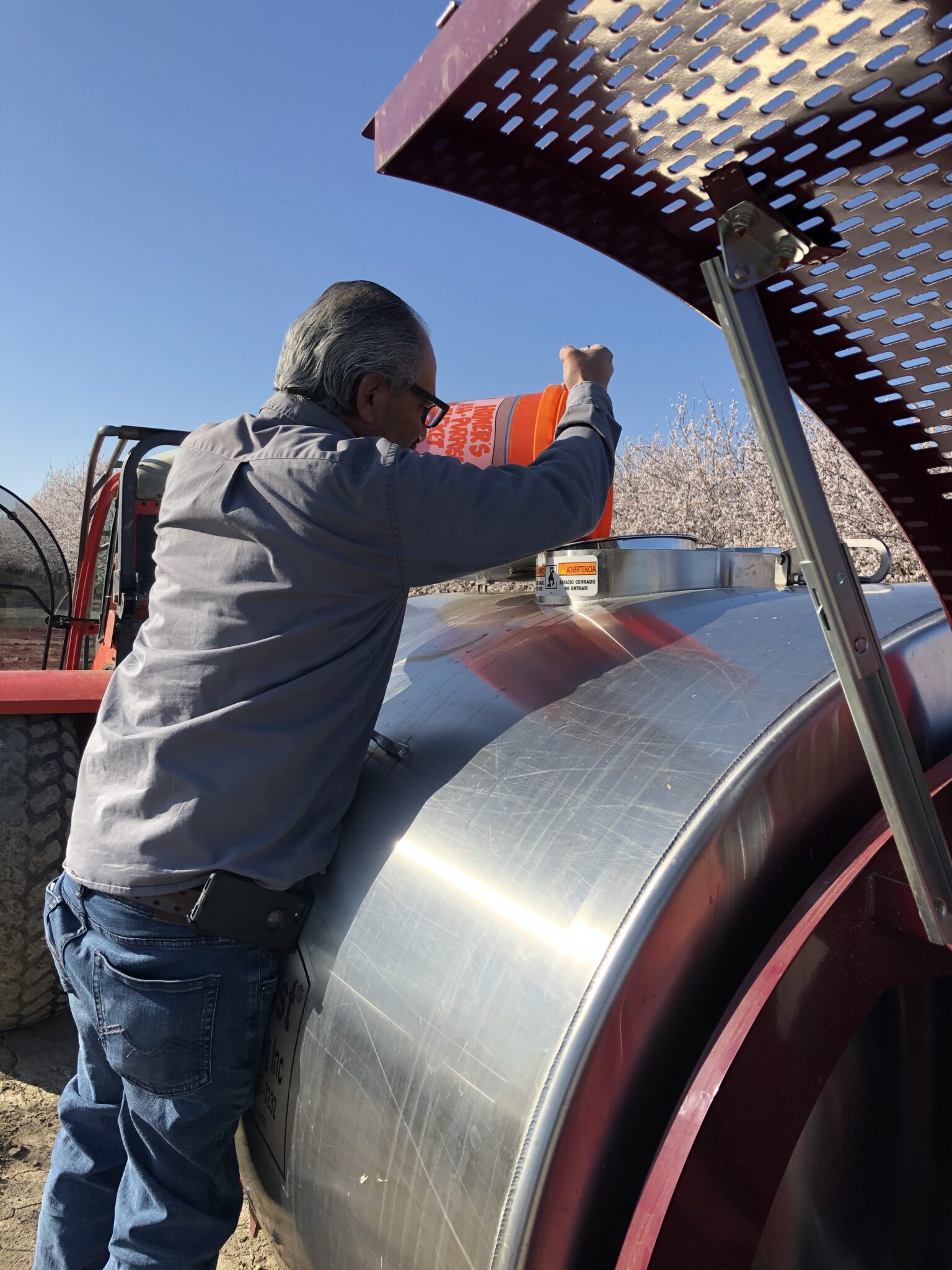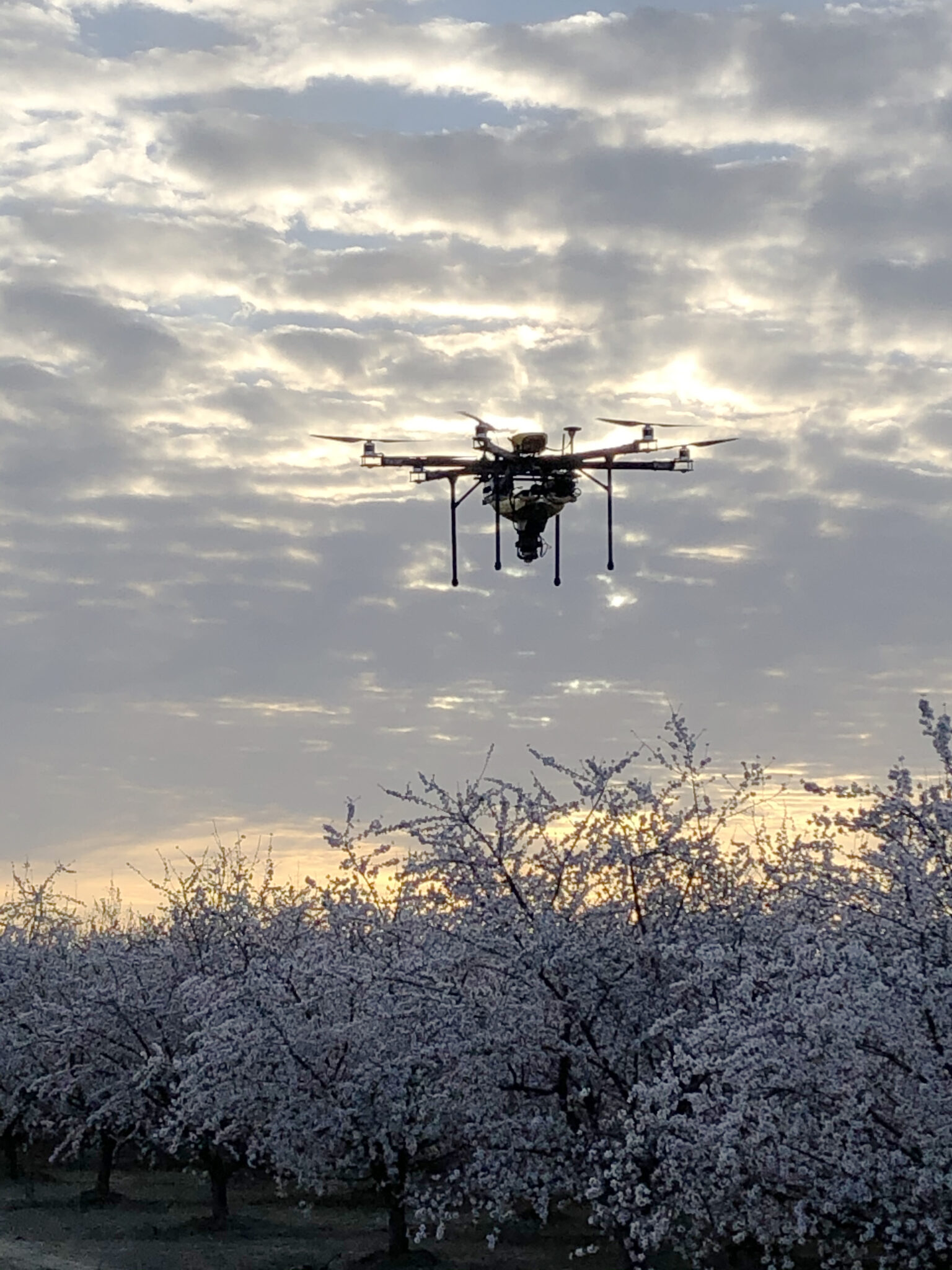
Large-scale almond trials are looking at different forms of mechanical application to supplement bee pollination in almond orchards. Given the excellent natural pollination season during the first year of trials using drones or electrostatic sprayer to apply supplemental pollen, those trials produced no yield differences among treatments, according to preliminary results. But researchers and participants say those practices warrant further study to see how they improve yields in an off year.
Jim F. Cook of Colusa County Farm Supply Research said he’d like to continue the work to see whether mechanical supplementation might improve yields during poor pollination conditions.
“I’m not surprised that we didn’t see any differences under this year’s excellent bloom,” he said. “What we have done this year is determine how to do this. My recommendation is, let’s rerun it on the same sites on the same rows again. If you’re under a poor pollination year where it’s cold and the bees aren’t flying very far, it could be different.”
At the same time, the trials raised a number of additional questions, said Cook, who led the project. Among those are cost, the tight application window, Federal Aviation Administration drone flight regulations and unforgiving weather.
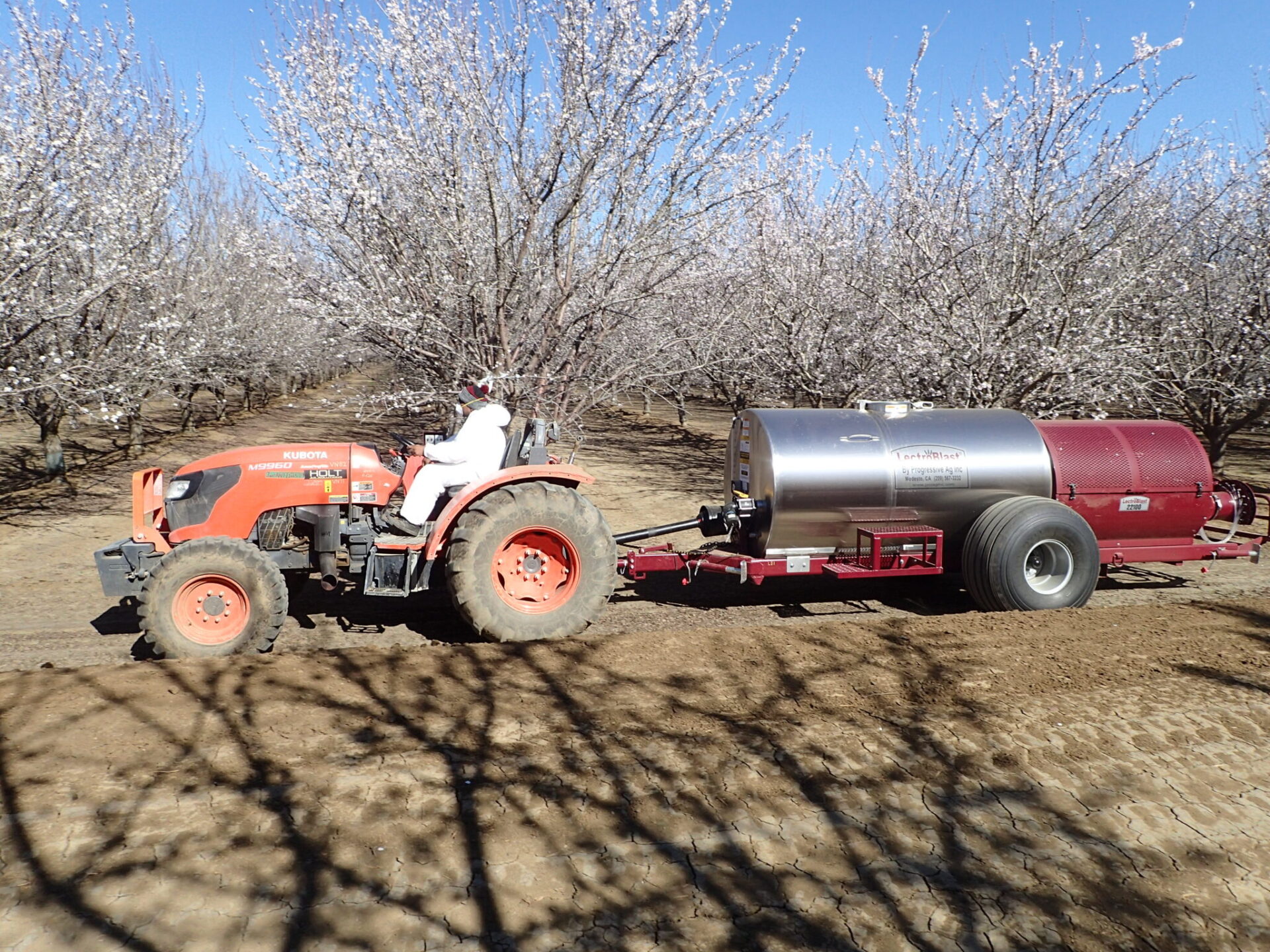
A Little Mechanical Help
Growers typically place between 2 and 2.5 beehives per acre around the exterior of almond orchards because of ease and accessibility. The trial was designed to see whether mechanical application of pollen could supplement bee pollination, particularly in the centers of orchards that are farther from the hives. It was not designed to see whether growers could eliminate bee pollination, Cook said.
“There are a lot of nuts on the outside (of the orchard) because that’s where the bees are working,” he said. “We have to go after the yield in the center of the orchard because that’s where the problems are.”
Ryan Finnen, an almond grower near Williams, Calif., said he volunteered two almond orchards for the trials to see if supplemental pollen applied with an electrostatic sprayer might help a past issue with Nonpareils.
“If we could spray on pollen, that would help with any negative circumstance we could face,” he said. “And when you start to factor in the rising cost of bees, they are just getting more and more expensive every year.”
Although the preliminary results were inconclusive, Finnen said he would like to continue to participate to see how the supplemental pollen would perform under poorer conditions.
“It’s kind of like an additional insurance policy where it’s only going to come into play when the weather is subpar and you really need it,” he said.
Ryan Reisbick, general manager of Firman Pollen Co. Inc. based in Yakima, Wash., said he was interested in Cook’s trials as part of ongoing work in almonds. The company, which has been providing pollen since 1933, has conducted trials with Washington State University for eight years.
During the past five years, the electrostatic application has become a commonly accepted practice in Washington fruit orchards. Firman Pollen has been conducting trials in almonds for the past four to five seasons.
The company also has collaborated with Washington State University researchers to develop adjuvants to improve electrostatic pollen applications.
“From our perspective, electrostatic applications probably are the most efficient since we’re uniformly coating the tree with our pollen,” Reisbick said. “WSU research has shown an increase of three to four times in pollen deposition on the stigmatic surface.
“Certainly, there are some limitations with electrostatic applications without question. That’s where some of our other application methods, like hive inserts or dusting, can be of benefit.”
Although Dropcopter had conducted research looking at drone-applied supplemental pollen applications to apples for the past three years, 2020 was the first year the company was involved with trials with almonds, said company co-founder Matt Koball.
“This independent research validation is something we were planning to do every year for all of the crops we work with,” Koball said. “So, we were actually looking for partners to do this with.
There hasn’t been a lot of research done on any supplemental or augmented pollination, so we have to step up to the plate and do it ourselves.”
For the past three to four years, Mark Ryckman of Progressive Ag has worked with Firman Pollen and a handful of Stanislaus County almond growers to apply supplemental pollen using LectroBlast electrostatic sprayers. One grower saw a 900-pound-per-acre improvement during poor bloom conditions.
“I know off the bat that this year wasn’t going to show us any type of exceptional data because the bloom was so strong,” Ryckman said. “Some Modesto growers ran pollen through our sprayers and you could visually see the differences. I’m waiting to get their numbers back because Modesto is a little different than Williams.”
Even with the current low price of almonds, he said a yield increase of 300 pounds per acre would more than pay for a pollen application.
The trials came about at the request of Colusa County Farm Supply Research growers.
“We do projects like this for our growers all the time,” Cook said. “It gives us a chance to learn about it. We get outstanding cooperation from the growers because that’s what they want to see. These guys are motivated. That makes the mechanics of the study much better.”
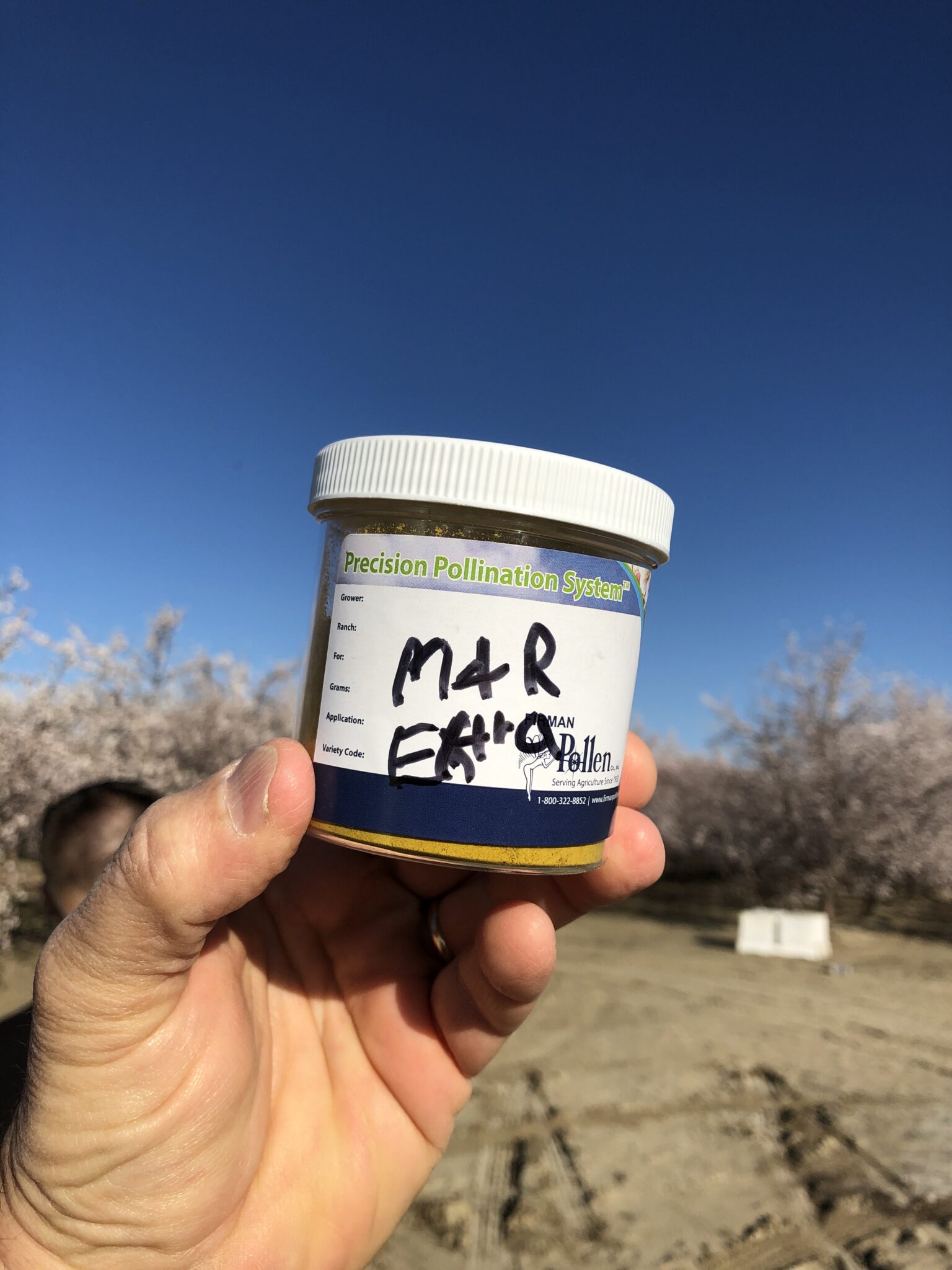
Trial Specifics
The trial involved three Williams-area almond orchards with Nonpareils and pollinizers. In two of the trials, applications were only made to the Nonpareils. In one, applications also were made to Montereys and Winters.
In one trial, the drone applied 35 grams of pollen per acre, while in the other two it applied 70 grams of regular pollen per acre. Regular pollen also contains other flower parts such as stigmas, while pure pollen is just that.
In all three trials, the electrostatic sprayer applied 15 grams of pure pollen per acre as well as a surfactant to improve adherence to flower stigmas in 15 gallons of water per acre. The application timings ranged between 50% and 80% bloom.
In addition, one treatment involved an electrostatic pollen application at 80% bloom one day, followed a day later with a full-bloom fungicide to determine whether a subsequent fungicide spray affected pollen viability.
Cook has been pushing for a fungicide-pollen tank mix trial to reduce costs and cut in half the passes through the orchard. Even under the best of years, weather typically only allows one pass during the full-bloom period. Having to make two applications is dicey.
“Weather won’t allow it; it just won’t happen,” he said.
Given a choice of only making one application, Cook said most growers would favor the full-bloom fungicide application over supplemental pollen.
He doesn’t believe the tank mix would reduce pollen efficacy because growers currently apply fungicide sprays when almond flowers are open and pollen is exposed without any apparent negative effects.
Although Reisbick said they are concerned that chemicals in the tank mix could reduce pollen viability, he remains open to Cook’s suggestion. He said they may conduct trials this winter that involve putting pollen in a fungicide solution to test whether it remains viable.
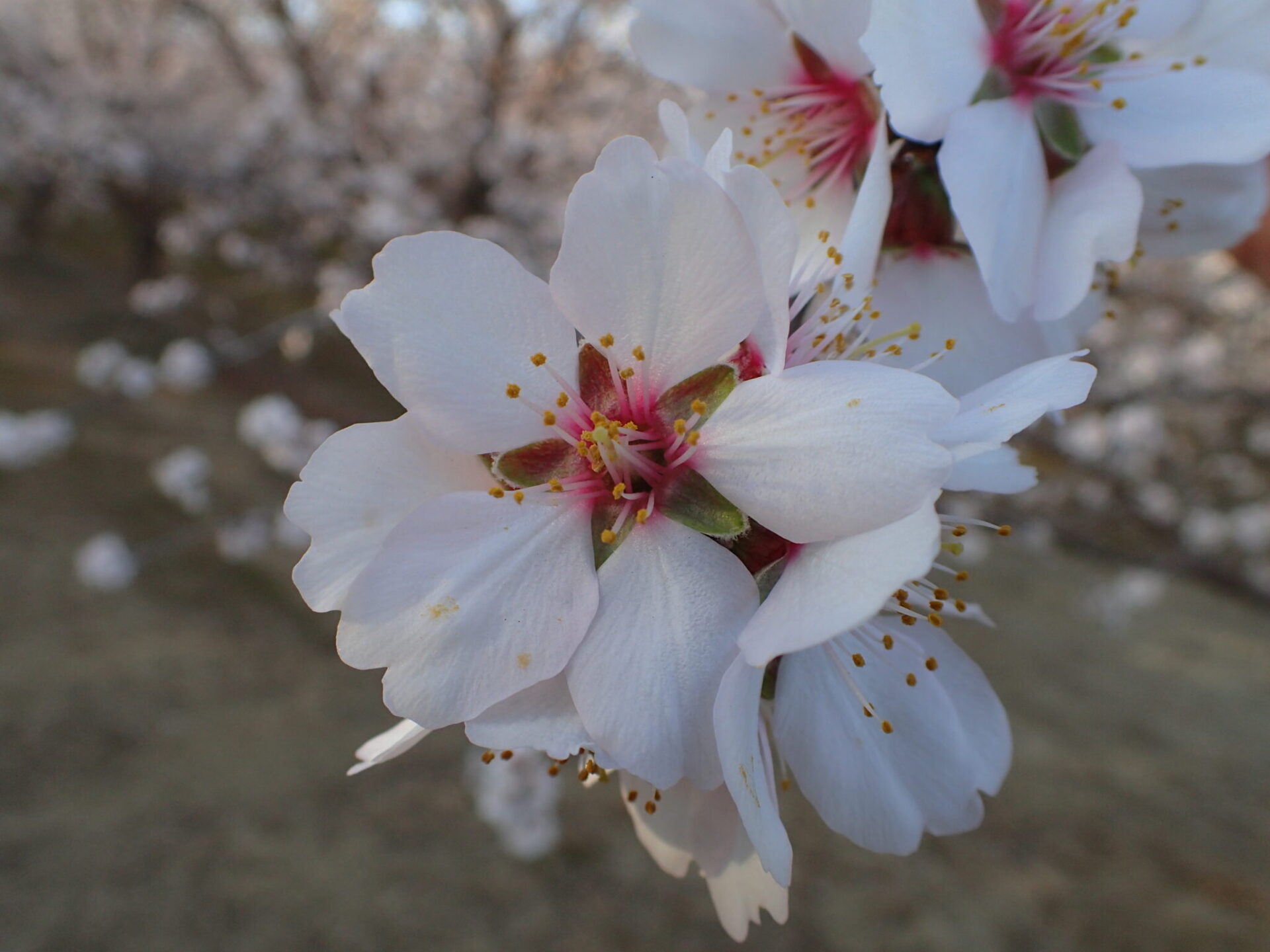
Many Questions Remain
Preliminary results showed supplemental pollen applications did not raise yields significantly, but they also did not decrease yields, Cook said. The trials, however, did demonstrate how challenging a mechanical application of pollen can be.
Depending on the year, almond blooms may only be receptive to pollen for a day or two. And an orchard may go from 20% bloom to 80% bloom in a day, complicating pollen application timing.
Currently, the FAA requires drones be kept in line of sight. In a mature orchard, that means having a spotter in a tower if the pilot cannot maintain line of sight.
The agency also has regulations that restrict flights near busy roadways and highways, airport flight paths and many other locations.
In addition, drone operators applying pollen must have a FAA Part 137 certificate, the same as ag pilots who apply crop materials using fixed-wing planes or helicopters. Although this year’s extended bloom offered researchers the luxury of time, Cook said that may not always be the case.
“If it gets really hot or the weather turns nasty, they aren’t going to be able to do this,” he said. “They’re going to have to set up a canopy or trailer and live there until it flowers.”
The same nasty wet weather and muddy conditions may prevent an electrostatic sprayer from entering an orchard. Faced with those challenges in the past, many almond growers turned to aerial applications for bloom-time fungicides.
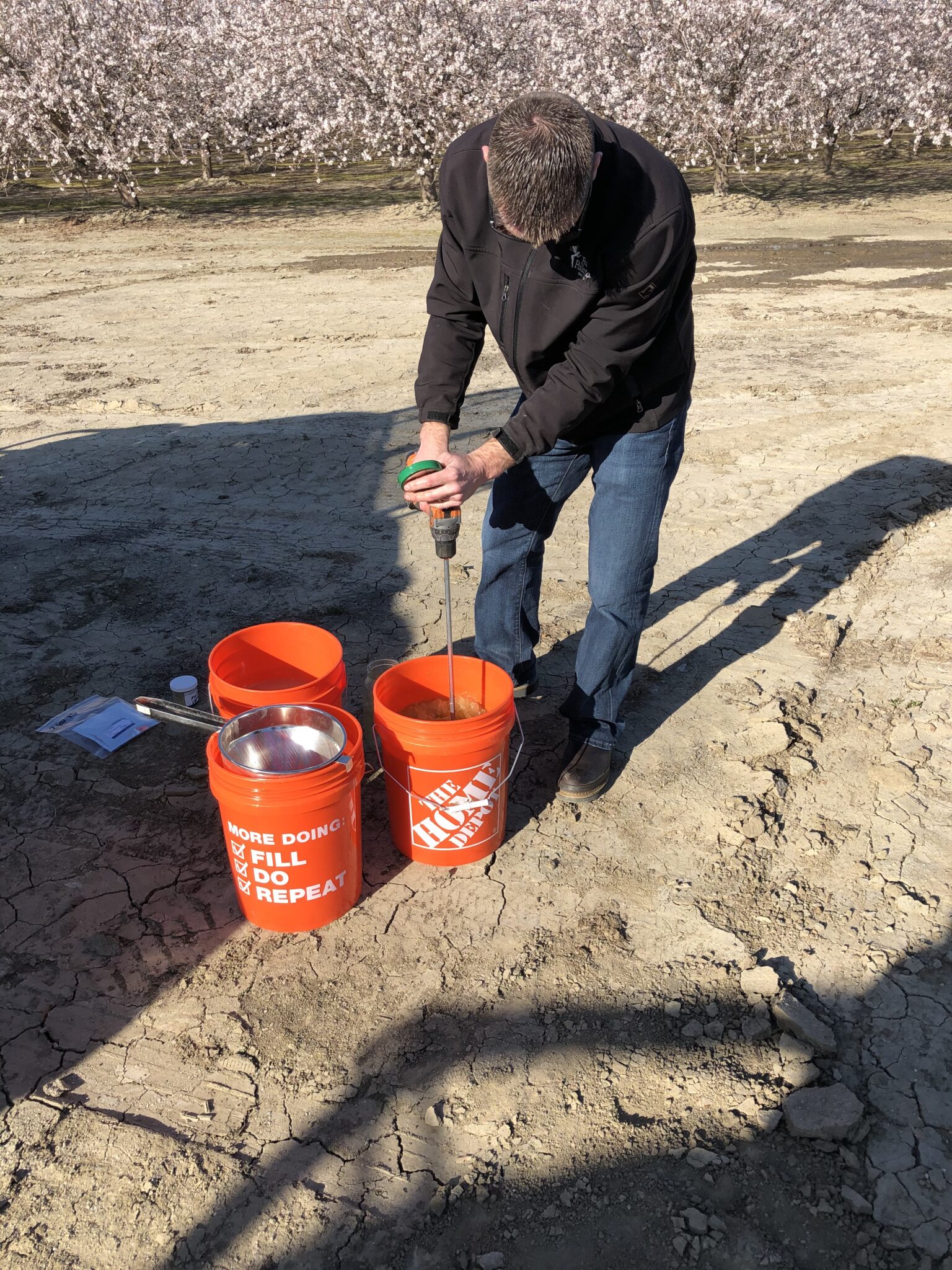
Previous Trials
This is not the first time that researchers have looked at supplemental pollen applications, either.
Robbin Thorp of UC Davis saw benefits in using supplemental pollen in four solid rows of Nonpareil in a 1987 trial. But that orchard configuration is no longer used.
A trial conducted by UCCE Farm Advisor Elizabeth Fichtner and UCCE Staff Research Associate Katherine Wilson in 2014 in Tulare County found no significant benefits of mechanical pollination to supplement bee activity. The study involved Fritz, Nonpareil and Monterey, and compared pollen applied at three different rates using an electrostatic sprayer. The check was natural bee pollination. The results backed up previous research findings.
